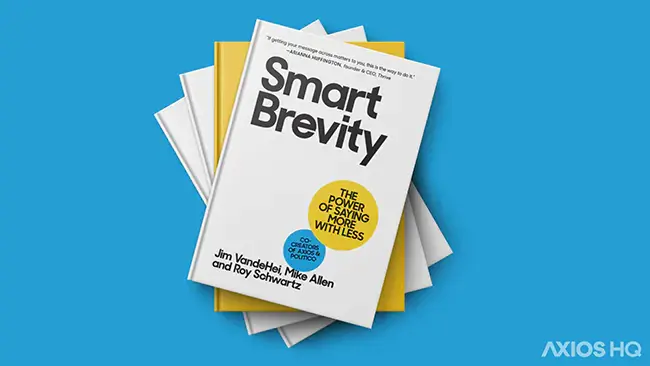How leaders can learn from 2024 for better communication in 2025

To make your 2025 communication strategy a success, you need to figure out what went well — and not so well — in 2024.
- Why it matters: Workplace miscommunications not only cost U.S. businesses $26,000 per employee each year, but they can also lead to lower retention rates, bad company culture, and decreased employee engagement.
It’s up to executives and managers to lead the way in identifying which key messages aren’t connecting in order to save time and money. Step one is evaluating how your messages performed in 2024 — then find areas of improvement or opportunity and adjust your 2025 communications strategy to continue elevating what’s essential.
1) Look back at how your 2024 communications fared.
- Review your open rates. Did certain topics or subject lines earn higher engagement? Those might be your true essential communications — the details your audience is most eager to consume and help them stay productive. Prioritize them in your 2025 plan. If you don’t have access to performance data for employee or stakeholder outreach, consider if adding a tool that offers that insight should be part of your 2025 plan.
- Reflect on your conversations. Were you answering the same questions over and over? Were meetings and 1:1s more of a catch-up than a look-ahead? Stakeholders, departments and teams all need unique context. Make sure the messages you share prioritize a specific reader and share only details they need. Try segmenting your audience and tailoring their updates. Consider sending pre-reads to key meetings and 1:1s so context is set and conversation can stay forward-looking.
- Refine your communication channels. Was there a central resource stakeholders and employees could check for internal messages? Did they know to check there? How often was it updated? Use consistency in channel and cadence so employees know where to find specific information. Communicate early via multiple channels — email, verbal, 1:1s, and newsletters — where info will be housed, how often employees should check it, and what exactly they will always find there.
Companies that use effective communication are almost five times as likely to retain the best employees as those that don’t. This means it should be a priority in the coming year in order to keep your team strong and performing as one cohesive unit.
2) Learn from other organizations’ best practices. Stakeholder communications inside many organizations tend to rely on three distinct — and highly defined —destinations.
- “In the moment” messages: These are your Slacks and Teams, the DMs you’d tap someone on the shoulder to say if you were in-person. Fast-moving with a short shelf life.
- Recurring email updates. These are an organization’s lifeblood. They synthesize progress, issues, and opportunities so staff stays informed, executives keep a pulse on performance, and everyone has transparent, trustworthy access to information.
- Knowledge hubs. This is Notion or your intranet, long-standing systems that document how teams work and what processes are. They’re used every now and then but are rich sources of historical context and insight — if you know where to look.
The less time colleagues have to spend searching for information, the sooner they can get back to work. If you meet them where they are, set expectations about where they can find the information they need and when it will be refreshed, you’ll jumpstart their ability to be smarter, more productive collaborators.
3) Develop a set of enhancements — but seek concrete feedback about them.
- Poll folks about what’s working and what’s not. Ask them what information they find most useful and when and how they prefer to receive those updates.
- Acknowledge your own observations. Take what you learned in your data dive and own reflections. See which, if any, align with the feedback from your audience.
- Define hypotheses for stronger communication. Based on what you’ve learned, brainstorm everything from what your first few sends in 2025 could cover, to the length and format those updates should take, to how you’ll divide your audience for more targeted reach. Decide how you’ll monitor and track success.
- Run those plans by trusted colleagues. More voices means more insights into any oversights. You’re more likely to appeal to a variety of stakeholders if you include diverse voices in the planning process.
- Revise and execute. Once you get feedback, refine your goals, messaging, and methods for optimal sends.
Company culture improves when employees feel heard and valued. Showing them you’re listening to their needs and instituting changes can go a long way in increasing trust and improving engagement.
The bottom line: Once you figure out what your audience wants, how they read it, and how often you should be sending, you can begin to map out your 2025 communications strategy. Continue to refine the number of sends, what you include, and the method until you see jumps in the numbers and increased engagement across the board.
Go deeper: How to understand your employees’ communication styles





.webp)












.webp)

















